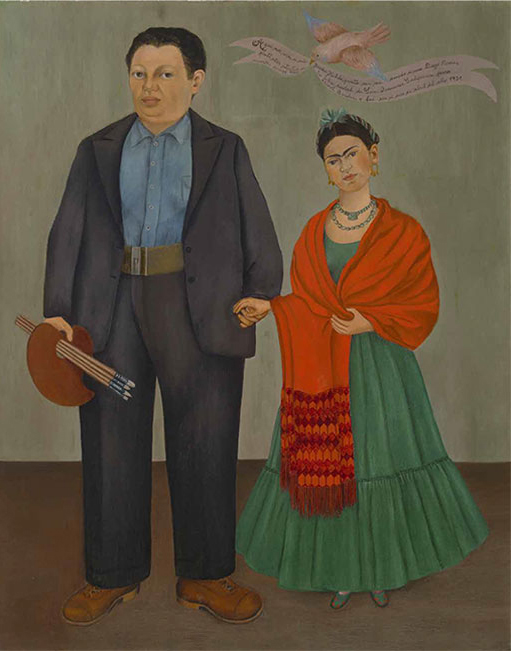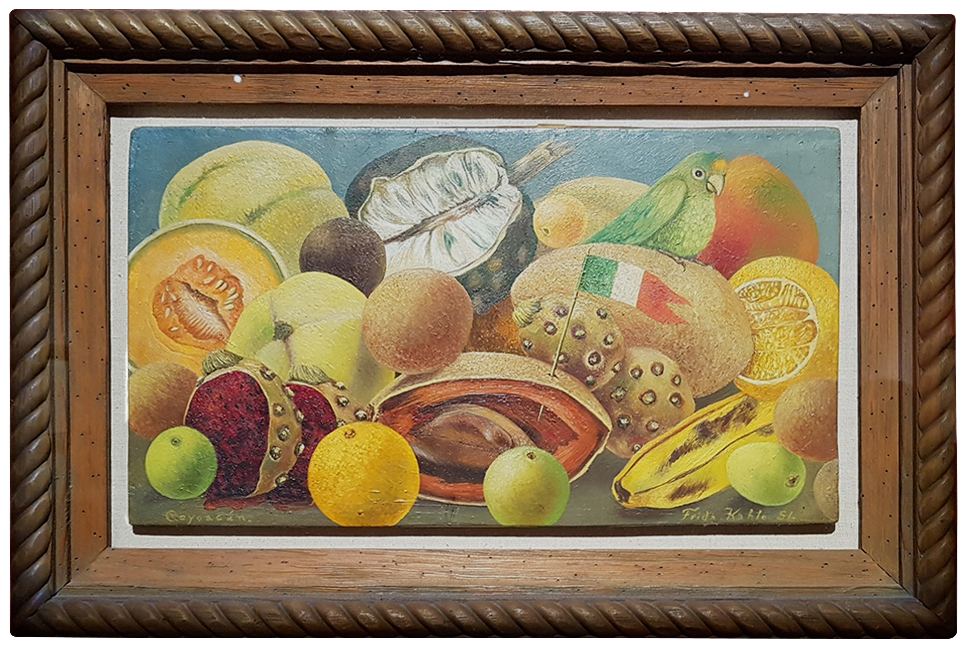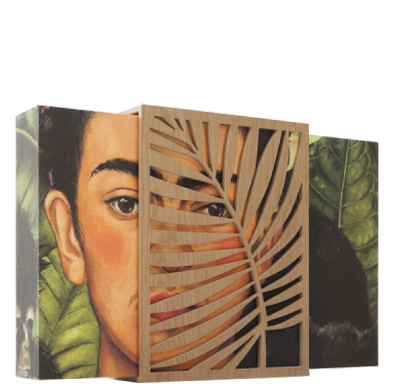Frida Kahlo, the artist who bade the world farewell with “Viva la Vida”
Frida Kahlo (1907 – 1954) was both born and later died in the month of July. Her short life was plagued with health issues, and she was also no stranger to the pain of heartbreak and the fear of loneliness. Nevertheless, she continued to paint until her final days. Today she is one of the most influential artists of all time.
The power of the imagination
Transgressive, vital and tireless, Frida Kahlo refused to give up in the face of adversity. If pain (physical or emotional) gripped her, or if her body forced her to remain bedridden, she clung to her dreams and continued to create beauty on canvas.
Few self-portraits in history evidence the tenacious spirit of an artist like The Broken Column (1944). It depicts the body of a woman still suffering from the after-effects of a terrible accident when she was 18. Despite the tears, however, her face radiates with a defiant confidence.

La columna rota, 1944. oil on masonite, 39 x 30,5 cm. Museo Dolores Olmedo, Ciudad de México.
© Album
© 2021 Banco de México Diego Rivera & Frida Kahlo Museums Trust. Av. 5 de Mayo No. 2, col. Centro, alc. Cuauhtémoc, c.p. 06000, Mexico City
To treat her chronic back pain, Frida began to wear the corset that had been prescribed for her. During this period, she had to stop going to the Academy of Art to teach painting classes, but she made the effort to invite her students to her home in Coyoacán to continue the course.
Passions and hopes
Her relationship with Diego Rivera was another source of pain. Although on the surface Frida accepted her husband’s love affairs, paintings such as Diego and I (1949) reveal the artist’s true feelings.

Frida Kahlo y Diego Rivera, 1931. San Francisco Museum of Modern Art, colección Albert M. Bender
© Album/Fine Art Images
© 2021 Banco de México Diego Rivera & Frida Kahlo Museums Trust. Av. 5 de Mayo No. 2, col. Centro, alc. Cuauhtémoc, c.p. 06000, Mexico City
Following seven operations on her spine, she was fitted with a special easel that allowed her to paint lying in bed. This is how she painted Self-Portrait with a Portrait of Dr. Farill (1951), dedicated to the surgeon who managed to partially alleviate her pain.
This painting also reflects one of Frida’s influences: Mexican votive offerings, which have a long tradition in popular art.
Her only solo exhibition
By the 1950s she could no longer work without the aid of painkillers. Gradually, her brushwork became less detailed, and she began to paint more still lifes than portraits.

Naturaleza muerta con perico y bandera, 1951. Oil on masonite, 28 x 40 cm. @wikicommons.
After sharing space with other artists in earlier shows, in 1953 Frida Kahlo celebrated the first solo exhibition of her art in Mexico City. However, doctors forbade her to travel to the exhibition, hosted at Lola Álvarez Bravo’s Galería de Arte Contemporáneo.
Naturally, her rebellious spirit got the better of her and she asked for her special bed to be moved to the exhibition. She arrived by ambulance, dressed in her traditional garb. Frida was stunned by the exhibition’s success and the overwhelming response from the public.
Wings to fly
Her life’s most bittersweet moments came a few months after the exhibition. Because of the issues she had suffered since childhood, she had to have her right leg amputated up to the knee. Shortly before the operation she expressed her fears in Appearances Can Be Deceiving (1953), in which she drew what she was hiding under her clothes: her injured spine and wounded leg.

Las apariencias engañan, 1953. Detail of the Book of studies of Los sueños de Frida Kahlo.
Post-amputation she learned to walk short distances with a prosthesis. In her diary, next to a drawing of her lost leg, she wrote: “What do I want feet for? If I have wings to fly” (1953).
Frida’s farewell: Viva La Vida
She barely got out of bed during the final months of her life, the pain finally breaking her spirit. Nevertheless, she took up her brushes for the last time to create a painting bursting with colour and light. It is a still life of watermelons with a blue sky in the background. Written on one of the melons is “Viva la vida. Frida Kahlo. Coyoacán 1954 – Mexico”.

Viva la vida, 1954. Detail of the Book of studies of Los sueños de Frida Kahlo.
The watermelon had a double meaning for the artist. It is both a symbol of her homeland (it has the colours of the Mexican flag) and a representation of a passion for life through the vibrant red of its interior.
Frida died on 13 July 1954, seven days after her 47th birthday. Despite all the suffering she experienced in her short life, she chose to say farewell with a positive message.
The dreams of a brilliant artist
- The Dreams of Frida Kahlo: an exclusive work that provides a glimpse into the intimate universe of a 20th-century icon. The artist’s drawings are the least known part of her artistic output.
- A rigorous study that brings together, for the first time, a scattered legacy of pencilled dreams, secret portraits, fantasies, private amusements, still lifes and sketches dedicated to friends and lovers.
Limited edition of only 2998 copies. The work includes: the Art Book, with 34 original scale prints; the Study Book, with more than 100 drawings; and the Art Folder, with the reproduction of a large print.

